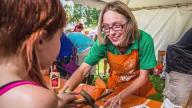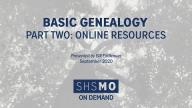SHSMO workshops, lectures, and virtual programs are freely available to worldwide audiences to watch anytime.
Watch as Bill Eddleman discusses the different types of courts and the records that can be of genealogical interest, including details on where to locate court records, where to find laws regulating these courts, and the basis for the legal systems.

























